The recipe here is for a sturdy, spicy, and very crisp cookie. It holds up well, and will not get soggy or stale. Follow the directions as written, practice your rolling, and make sure you have a good, airtight container. Don’t skip the dot of blue coloring in the glaze, and if you want to hang them, make the hole in the dough with a toothpick before baking. This cookie recipe can also be used to make gingerbread houses.
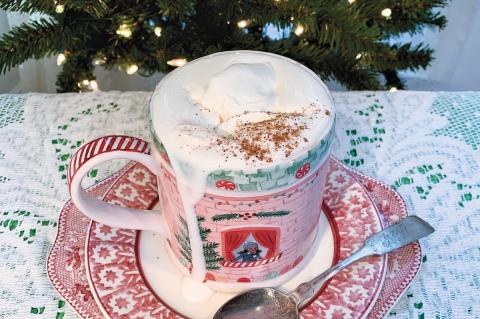 RECIPE: Hot Hot Chocolate
RECIPE: Hot Hot ChocolateFrom Steven Amaral, proprietor and chef at North Fork Chocolate Company, comes this take on spicy hot chocolate.
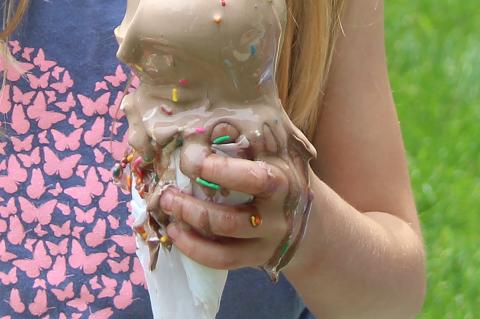 OVERHEARD: Emergency Party
OVERHEARD: Emergency PartyEight adults gather around a dining table in Southampton, early evening, early summer. It isn’t a book club, but the group uses one as its guide: 2040: A Handbook for the Regeneration by the Australian author Damon Gameau, based on a documentary of the same name.
Sushi and sashimi — they're fun to eat, fun to look at, and fun to make yourself. With the right combination of tools, tutorials, practice, and products — mostly accessible on the East End, with maybe a little help from the internet gods — it’s not all that hard to pull off your own night of Japanese cooking.
 DIVERSIONS: Heart and Sole
DIVERSIONS: Heart and SoleBaby needs a new pair of shoes — now that the weather’s changing and school’s about to begin, here’s a shopping guide, from Montauk to Southampton.
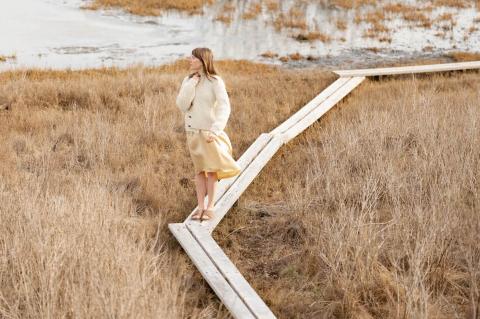 DIVERSIONS: Sweater Weather
DIVERSIONS: Sweater WeatherMind Offline has a wide assortment of clothing, crafts, and yarn for knitting, as well as a soothing and welcoming atmosphere in this online-heavy world we live in. Recently, the shop embarked on a journey to produce yarns and hand-knit garments in the most close-looped, eco-friendly system possible: sourcing, milling, and producing fibers no more than 300 miles from the store. The result is Local Wool Co., and it’s fast becoming a vital element of Mind Offline’s offerings.
 NEIGHBORS: The Man Behind the Curtain
NEIGHBORS: The Man Behind the CurtainIf there’s a way to be here and not here at the same time — like a ghost you can hear laughing, or a well-dressed omniscient narrator — Mike Lavin has figured it out. A photographer and filmmaker, podcast engineer and videographer, Lavin has been building a name for himself as the talent behind the camera that has captured some of today’s hottest comedy and rap stars.
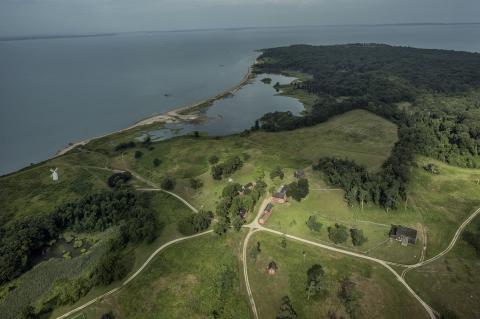 OVERHEARD: Fantasy Island
OVERHEARD: Fantasy IslandThere is an artifact that is now housed in the Long Island Collection at the East Hampton Library — framed, and hung on the wall behind protective glass — that dates back 323 years. It measures just under four-and-a-half inches long and less than half that high. It is only a small fragment of cloth, woven of silk, cotton, and metallic gold and silver thread. Yet, this remarkable remnant of sumptuous silk is the very stuff of pirate legend.
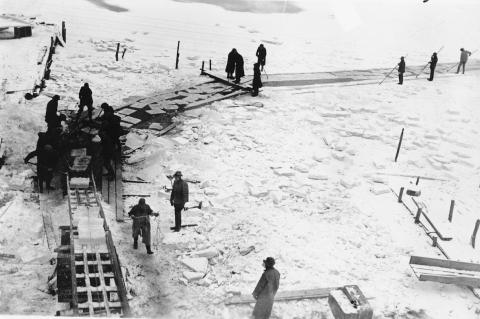 OVERHEARD: Ice, Ice Baby
OVERHEARD: Ice, Ice BabyBefore there were free electric-buggy rides offering ice-cold mineral waters on your way to Main Beach — before the instant chill of ducking into a brisk Ralph Lauren boutique to escape the blazing rays, before anyone had ever heard the words “climate change” — there were ice houses.
 ARTIST TO KNOW: David Burliuk, Time Traveler
ARTIST TO KNOW: David Burliuk, Time TravelerSometimes time telescopes and a personage from one epoch appears in a contemporary context causing cognitive dissonance: Harriet Tubman, for example, lived until the age of the Model T Ford. And so it was perhaps with some puzzlement, if not awe, that Hamptons art-world habitués must have regarded the Ukrainian poet and painter David Burliuk, the “Father of Russian Futurism,” when he appeared in the somewhat poky-prosaic setting of art openings at Guild Hall at midcentury.
 BOUNTY: Red Delicious
BOUNTY: Red DeliciousAs all good foodies (and school kids on field trips) know, apple-picking time is upon us. Nina Dohanos speaks to a farmer for tips on choosing, storing, and cooking East End apples — the best apples on God's green earth.
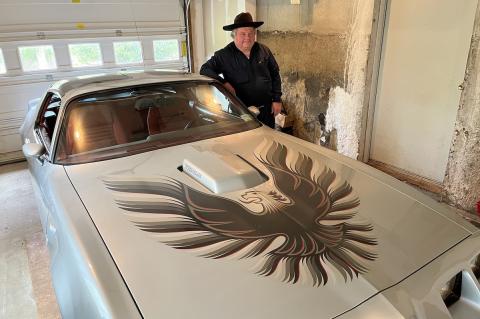 Overdrive: The East End's Obsession With Classic Cars
Overdrive: The East End's Obsession With Classic CarsHot cars have always raced between the hedges on Hamptons roads. But a few special societal factors — from the aging of Boomers and Gen X to the idle hours of the Covid-19 pandemic — have coincided to create a moment when demand for a classic Porsche, Cadillac, or Model “A” is outstripping supply. EAST investigates an obsession
 ON THE COVER: Samantha French
ON THE COVER: Samantha FrenchSamantha French's subjects are clearly not lounging poolside, but on a beach. It’s a moment that we recognize, here in our beach town: We know they know one-another intimately; a pair of sisters, perhaps, lifting their eyes from their books as they talk, while the boyfriend’s attention is elsewhere?
 OVERHEARD: Charmed, We're Sure
OVERHEARD: Charmed, We're SureMost would agree that Dora Frost, unmarried and unburdened by children, is a true 21st-century woman. At 71, Frost still paints daily in her West Palm Beach studio and posts an artistic offering a day on Instagram, to the delight of her followers.
 OVERHEARD: Go West
OVERHEARD: Go WestFor decades, East Enders feeling the pinch from out-of-control real estate prices have felt the pull of Riverhead’s affordability, but declined to go west: “It’s a great price,” they’d say, “but it’s in Riverhead.” Now, however, people who have spent decades on the South Fork are increasingly finding shelter in Riverhead and loving it so much that the narrative is starting to change.
 OVERHEARD: When the Bobwhite Sang
OVERHEARD: When the Bobwhite SangThe bobwhite makes both a song and question with its name. This is appropriate, since questions abound about this bird. Long Island is at the northern edge of the bobwhite range, but they have disappeared. Where did they go? Will they come back? Locals haven’t heard their familiar song for decades. Even its name — northern bobwhite, bobwhite, common bobwhite, quail, or partridge — is tensile and open to interpretation.
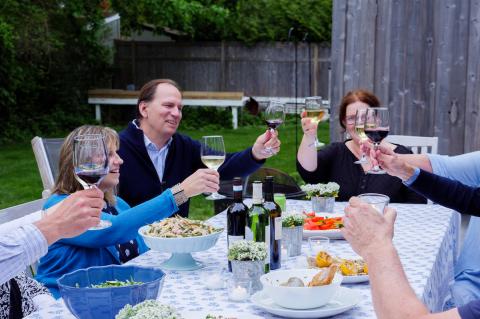 BOUNTY: That 1970s Dinner Party
BOUNTY: That 1970s Dinner PartyOnce upon a time on the East End, grown-ups hosted or attended dinner parties every single week. For the parents of Nina Dohanos — a Sag Harbor food blogger and accomplished home cook, herself — that meant dreaming up more than 100 dinner parties back in the 1970s. Using a family notebook as her guide, she re-created a marvelous meal from the summer of 1973, down to the heirloom checkered tablecloth...
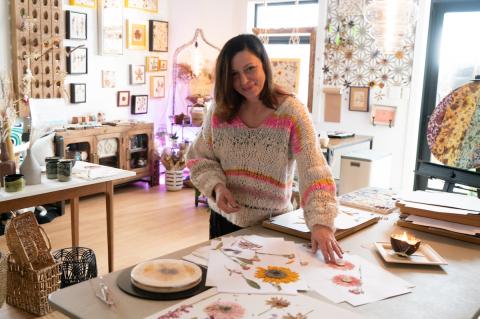 DIVERSIONS: A New Favorite Spot in Montauk
DIVERSIONS: A New Favorite Spot in MontaukPart art studio and gallery, part boutique and café, Poppy Heart in Montauk is just one of those places with feel-good energy all around.
 MEMOIR: Surfing Vietnam
MEMOIR: Surfing VietnamDuring the war, soldiers and sailors took R&R on China Beach, just north of Da Nang. One of the men who remembers it well is Joseph Giannini of Montauk, who attained the rank of captain in the U.S. Marine Corps. Here, his memories of days of combat and days of waves.
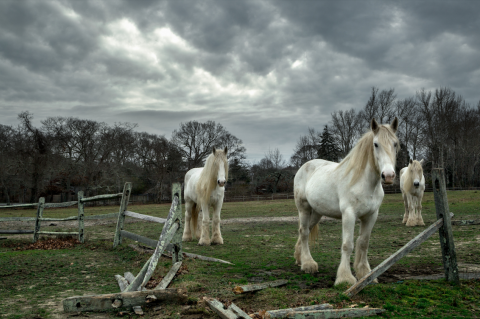 OUT HERE: Ghost Riders
OUT HERE: Ghost RidersThese horses aren’t here anymore. But you might remember them? They used to live at Cove Hollow, gamboling and grazing in the green meadow of the farm on your left as you drive into East Hampton Village, a glimpse of an agricultural past that some of us make a point of quickly turning to glance at — a split-second hit, a micro-respite from the modern day — before we turn back to cursing the crowds and the nagging of the iPhone alerts and the price of gas.
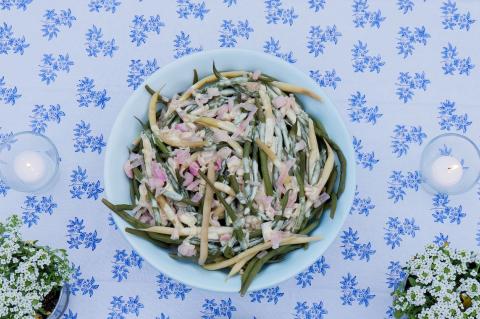 RECIPES: That 1970s Menu
RECIPES: That 1970s MenuNina Dohanos, a Sag Harbor food blogger, recreated an heirloom menu as a throwback to the days of dinner parties hosted by her parents, Peter and Marlys Dohanos.
Green Bean and Shallot Salad
Perfect at room temperature or cold from the fridge!
Ingredients:
2 lb. clean, local green beans
2 medium shallots, finely diced
 BOUNTY: Get Your Salad Freak On
BOUNTY: Get Your Salad Freak OnJess Damuck of Shelter Island is making waves coast-to-coast as a food and prop stylist, producer, writer, and self-proclaimed “salad freak.”
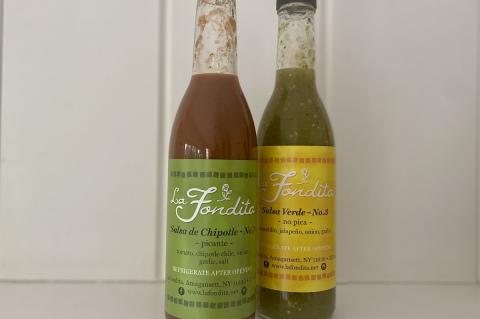 BOUNTY: Hey, Hot Heads!
BOUNTY: Hey, Hot Heads!A taste-test of locally produced spicy sauces and South Fork Srirachas.
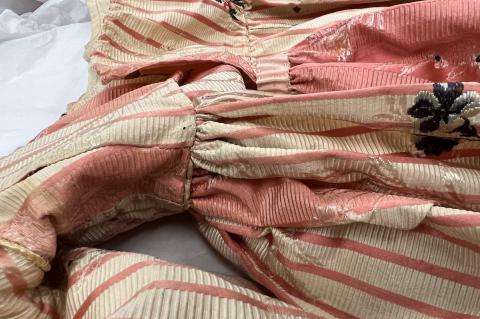 Something Old, Something New
Something Old, Something NewRare antique clothing and vintage fabrics require care and clever storage. Colette Gilbert picks up a few tips as she traces a thread between a Revolutionary War–era textile artist named Prudence Punderson and the contemporary couture house of Amy Zerner — revealing an East Hampton tradition of needlework and female artistry.
 The Best Salads of Summer 2022
The Best Salads of Summer 2022How do we want to eat this summer? Inspired by "Salad Freak," a cool new cookbook by Jess Damuck, a Shelter Island girl made good, our menu will be fresh, fast, fun (and full of folic acid!).
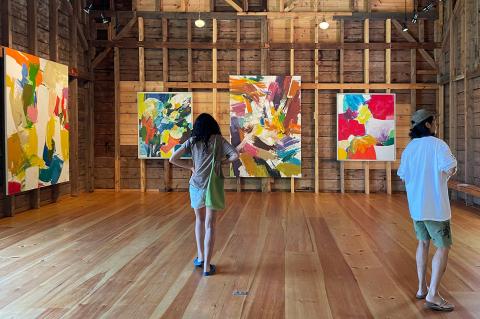 DIVERSIONS: American Pastoral
DIVERSIONS: American PastoralAway from the bustle, on just under seven acres in a bucolic corner of Springs, is Duck Creek — the surprising little arts center doing big things.
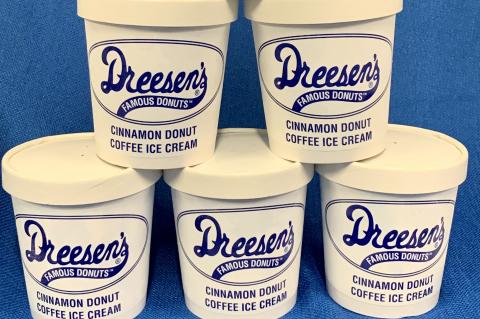 BOUNTY: Summer's Sweetest Pairing
BOUNTY: Summer's Sweetest PairingTwo beloved East End businesses have come together on a collaboration that is sure to be a very chill hit this summer: a specialty cinnamon-doughnut-spiked coffee ice cream, combining Dreesen’s Famous Donuts with John’s Drive-In’s ice cream.
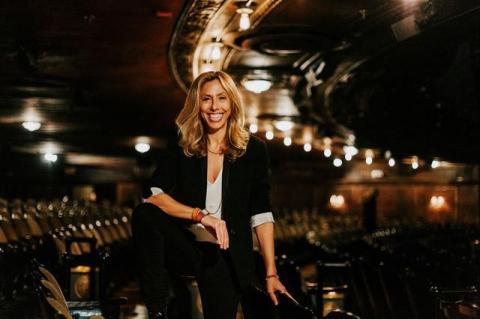 Neighbors: Funny Girl
Neighbors: Funny GirlAmanda Green, daughter of a legendary Broadway family and part-timer in Springs, has a hit of her own right now with "Mr. Saturday Night," starring Billy Crystal.
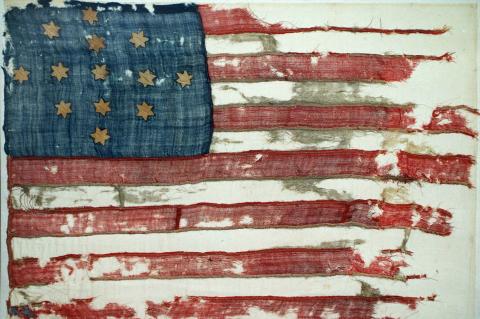 Capture the Flag
Capture the FlagThere’s a room on the lower level of the Suffolk County Historical Society building that holds an artifact that was once revered in local history. On display here is an object made out of cloth, stitched by hand, and preserved, tightly pressed under glass. It measures 41.5 inches by 28.5 inches and consists of 13 white six-pointed stars on a blue canton, with seven bars of red and six white. It’s constructed out of homespun, a worsted wool, with the stars made out of cotton muslin. It is known as the Hulbert flag because it was found stashed in the rafters of a Bridgehampton barn that was owned long ago by a man named John Hulbert.


